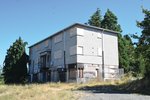Originally planned as a structure for affordable housing and now laying vacant and run down, the city of Port Townsend’s controversial Cherry Street Project property could soon be sold or even …
This item is available in full to subscribers.
We have recently launched a new and improved website. To continue reading, you will need to either log into your subscriber account, or purchase a new subscription.
If you had an active account on our previous website, then you have an account here. Simply reset your password to regain access to your account.
If you did not have an account on our previous website, but are a current print subscriber, click here to set up your website account.
Otherwise, click here to view your options for subscribing.
* Having trouble? Call our circulation department at 360-385-2900, or email our support.
Please log in to continue |
|


Originally planned as a structure for affordable housing and now laying vacant and run down, the city of Port Townsend’s controversial Cherry Street Project property could soon be sold or even demolished.
The Port Townsend City Council met Monday for a workshop to discuss the future of the ill-fated project. Though the city did not make a final decision, city officials mulled six options — and one recommended choice — for the building’s long-term future.
The Cherry Street Building, previously called the Carmel Building, was originally purchased in 2017 with housing provider Homeward Bound receiving a $250,000 city loan to barge the 70-year-old building from its previous home in Victoria, B.C. to Port Townsend.
After arriving, the building was placed on city property near Cherry and A streets and was set to be developed into an affordable housing property.
The city approved a 20-year bond for $834,000 in 2018 for planning, designing, and engineering the project, and also signed a 40-year loan agreement with Homeward Bound for $925,000.
The project has been dogged with unexpected higher costs, criticism from the community, and vandalism issues, and Homeward Bound said the project needed an additional $1.3 million to complete in 2019. Bayside Housing and Services took over the project from Homeward Bound in 2020.
Now, the city is considering different options on what to do with the Cherry Street Building.
In a presentation to the council, city staff laid out six choices along with details on the net cost or net gain, including a risk assessment and timeline for completion.
Option A is to continue on the current path to find an affordable housing provider to take on the project and be affordable for tenants up to 80 percent of the area median income (AMI). This is expected to cost the city $700,000. The choice is considered high risk and could take three to four years to complete.
Option B would involve selling the property on the market as-is to serve as middle income housing, priced to serve up to 120 percent AMI. The net cost for this option is $300,000, and city staff consider it a medium risk with a two-year timeline.
Option C is to sell it on the market as-is with no affordable housing requirements, but to require maximum density. It would be a net gain for the city at $225,000. The course of action is low risk and would take around a year to complete.
For Option D, the city would sell the property as-is with no restrictions. This option would earn the city an estimated $320,000. It would take a year to complete and is considered to be low risk.
Option E involves demolishing the building, creating two lots on the property, and selling the land as low density housing. It will have a net gain of $200,000, and that approach was labeled medium risk with a two-year timeline to completion.
The final choice, Option F, would see the city demolish the structure and retain the property. It would cost the city $100,000 and city staff noted it would be low risk and would take around a year.
The funds received by the city, if it chooses to complete one of the net-gain options, would be used to help the municipality with debt reduction, investment in other affordable housing projects, property maintenance costs, and other options.
Based on an analysis of overall costs, risks, and timelines, city staff recommended to move forward with Option D, which would mean the Cherry Street Building would be sold on the housing market as-is with zero restrictions on the property.
“Option D is the easiest in terms of putting it up on the market, and if somebody decides to use the house and rebuild it, great, it’s their choice,” Public Works Director Steve King said. “If they decide to demo it, that also would be their choice; no restriction.”